The rolling hills of Tuscany hide one of Italy’s finest wine treasures – Vino Nobile di Montepulciano. I discovered this gem during my recent travels through the picturesque medieval town of Montepulciano.
Walking through ancient cobblestone streets, you can feel centuries of winemaking tradition in the very air you breathe.
Vino Nobile di Montepulciano stands proudly as one of Tuscany’s top three red wines, alongside its famous cousins Brunello di Montalcino and Chianti Classico. What makes this wine region special isn’t just the exceptional quality of its reds, but the intimate experience you can have visiting small producers.

Many estates here produce fewer than 50,000 bottles annually, creating wines with incredible character and sense of place.
My wine tasting journey took me through stunning countryside vineyards, historic cellars, and face-to-face meetings with passionate vintners eager to share their craft.
Whether you’re a serious wine enthusiast or simply enjoy good wine with breathtaking views, Montepulciano offers an authentic Tuscan experience that combines history, culture, and unforgettable flavors in every glass.
Discovering Montepulciano
Montepulciano sits majestically on a limestone ridge in southern Tuscany, offering visitors a perfect blend of medieval architecture and world-class wine experiences. The town’s historic center and surrounding countryside create an ideal setting for wine enthusiasts and travelers alike.
The Heart of Tuscan Wine Country
I found Montepulciano to be one of Tuscany’s most charming hilltop towns, surrounded by vineyards that produce the renowned Vino Nobile di Montepulciano. This prestigious DOCG wine has been celebrated since the Renaissance, when it was considered the “wine of nobles.”
The rolling landscapes of Val d’Orcia create a stunning backdrop for the vineyards. During my visit, I noticed how the unique soil and climate conditions give Vino Nobile its distinctive character – rich, full-bodied, and elegant.
Many boutique wineries welcome visitors for tastings. I recommend scheduling visits to at least two estates to compare different interpretations of this classic Tuscan wine.
Most tours include vineyard walks and cellar visits where you’ll learn about the aging process in large oak barrels.
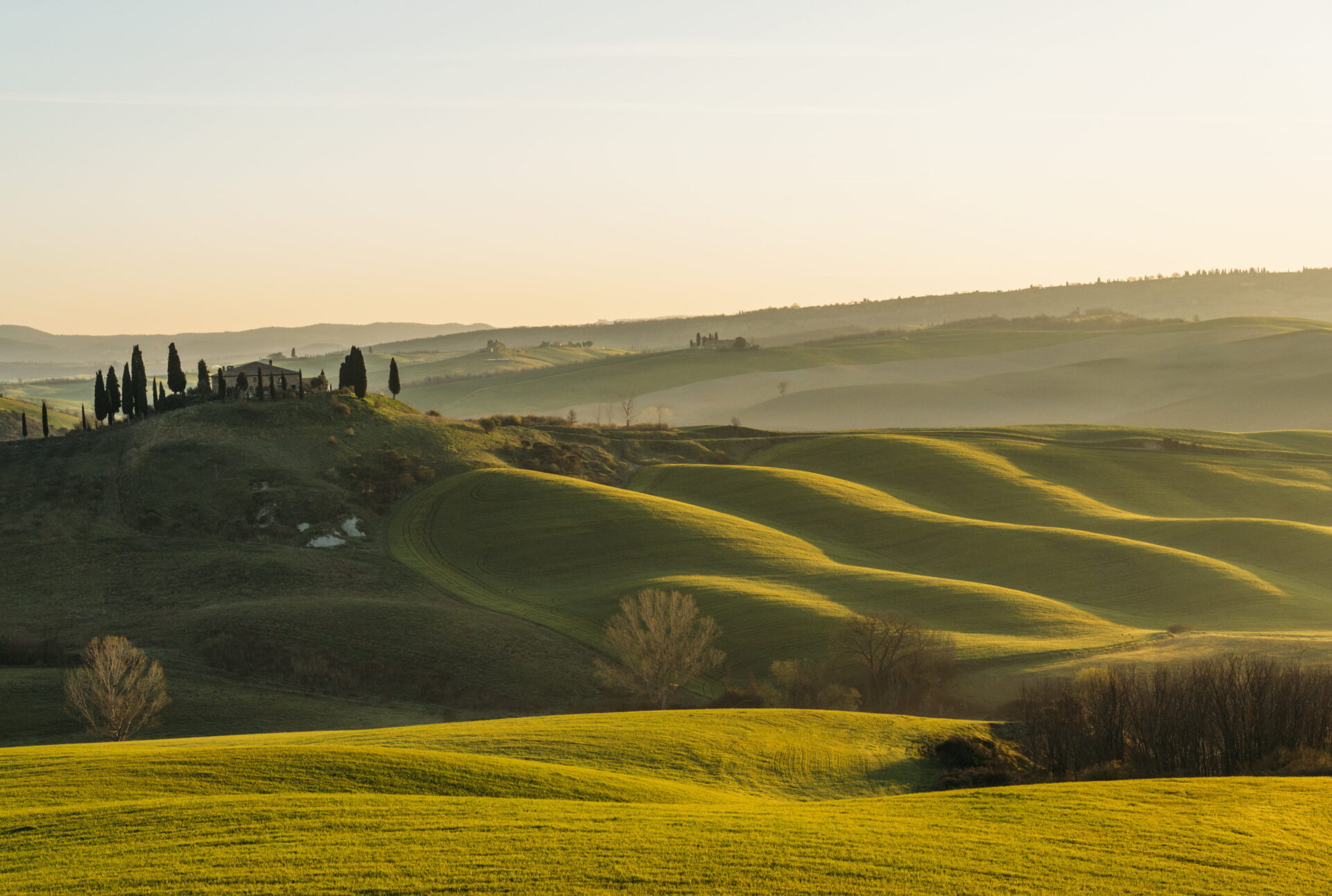
Navigating the Cobblestone Streets
Walking through Montepulciano feels like stepping back in time. I spent hours exploring the winding medieval streets lined with Renaissance palaces and ancient churches.
The main street, Corso, runs the length of the town and offers spectacular views of the surrounding countryside. Don’t miss Piazza Grande, the heart of the historic center with its impressive town hall and cathedral.
For wine lovers, underground cellars carved beneath the city streets are a must-see attraction. Many historic wineries offer tours of these fascinating spaces where Vino Nobile matures in oak barrels.
I suggest wearing comfortable shoes – the steep cobblestone streets can be challenging but reward you with breathtaking vistas at every turn. Early mornings and late afternoons offer the best light for photography and smaller crowds.
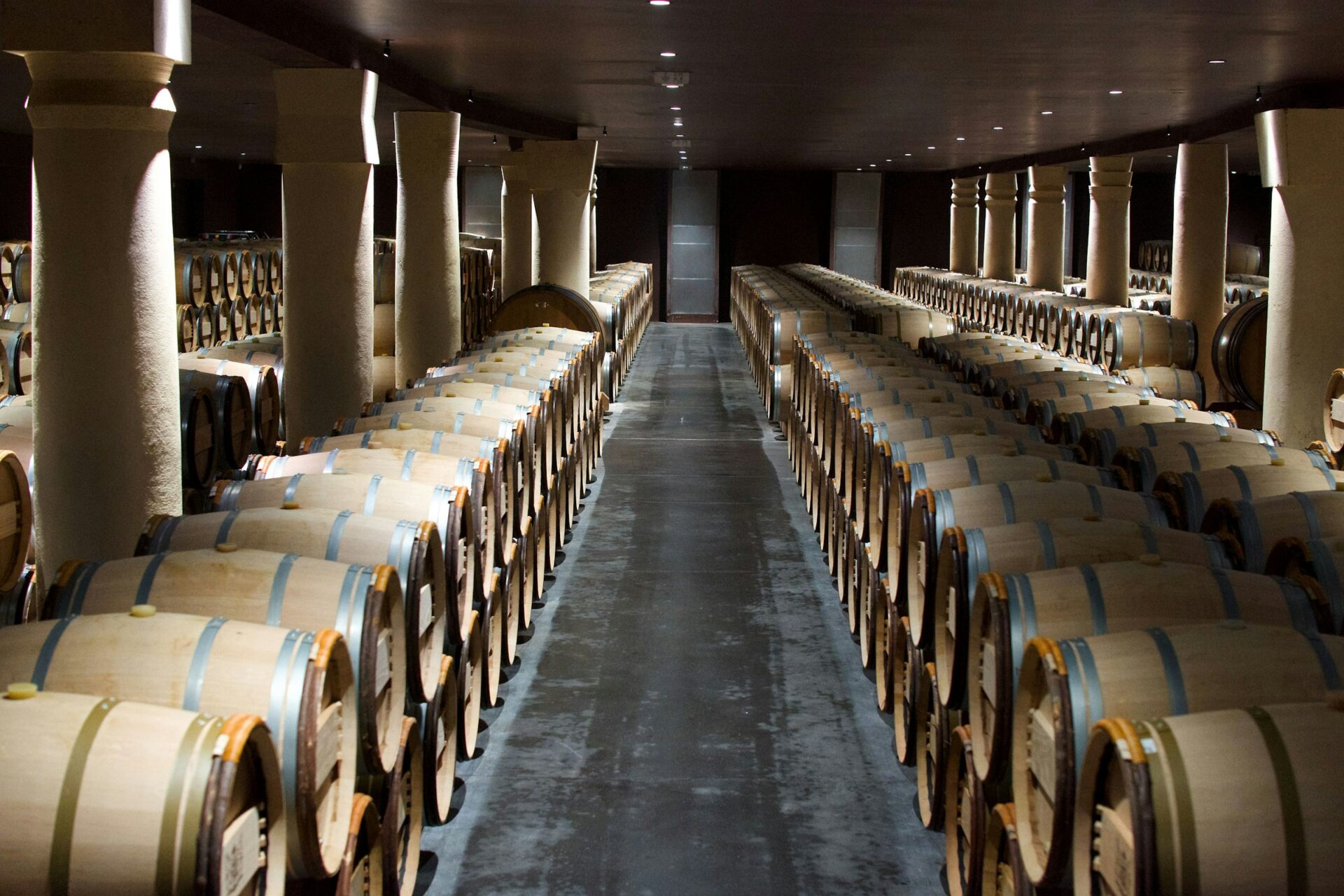
The Rich History of Vino Nobile
Vino Nobile di Montepulciano carries centuries of prestigious winemaking tradition. This “noble wine” earned its name from the aristocracy who treasured it, and its story weaves through Italian wine history like few others.
Sangiovese: The Pride of Tuscan Wines
When I walk through vineyards around Montepulciano, I’m actually surrounded by Sangiovese grapes, though locals call it by a special name: Prugnolo Gentile. This local variant of Sangiovese forms the backbone of Vino Nobile, giving it distinctive character.
The grape thrives in this region’s unique microclimate and terroir. I’ve noticed how winemakers speak about Prugnolo Gentile with particular pride, treating it almost like a family treasure passed through generations.
Dating back to the 1600s, Vino Nobile received high praise from scientists and poets alike. Francesco Redi famously declared it “king of all wines,” cementing its reputation throughout Italy and beyond.
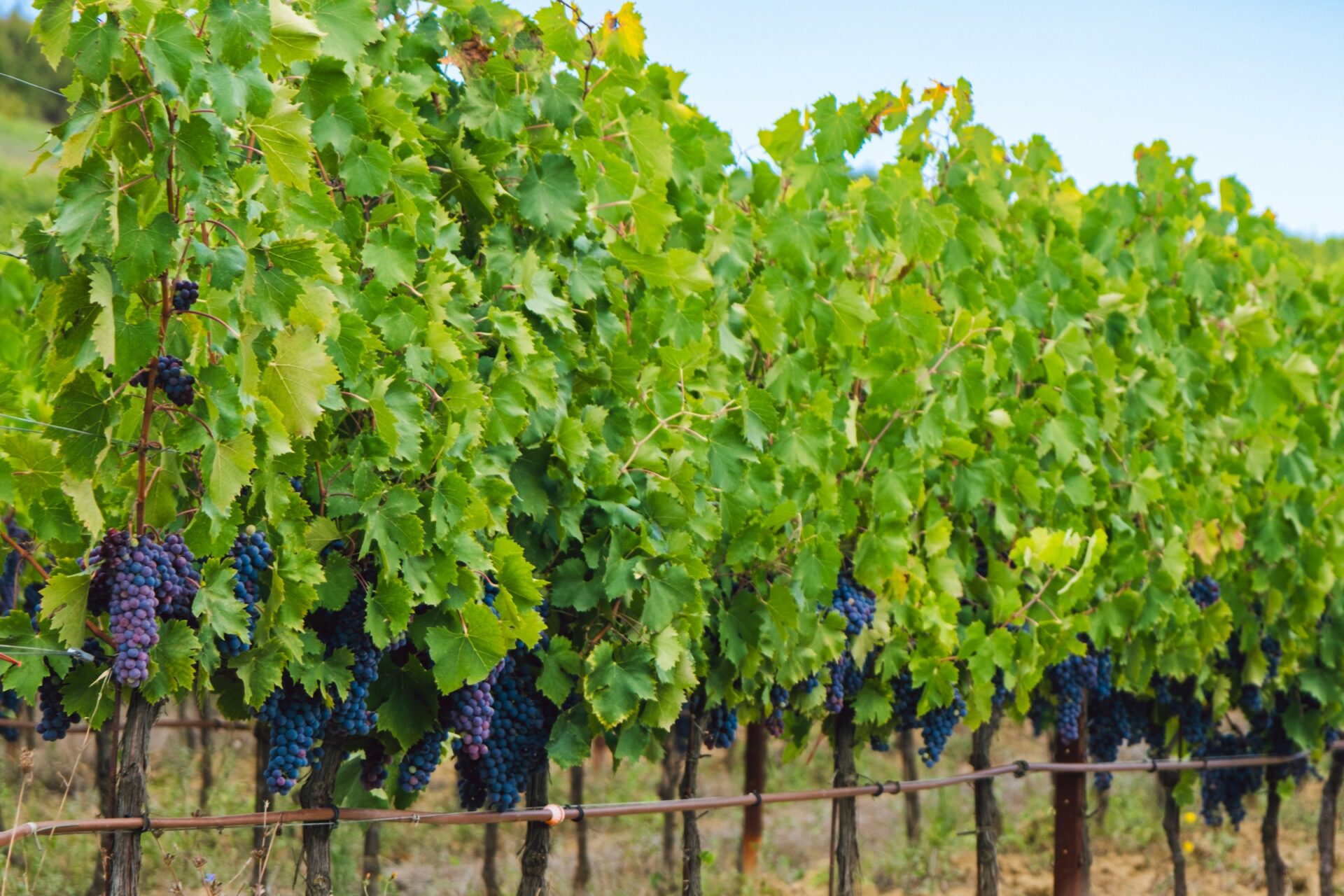
The Legacy of DOCG Designation
My appreciation for Vino Nobile deepened when I learned it was among Italy’s very first wines to receive the prestigious DOCG status (Denominazione di Origine Controllata e Garantita). This highest classification in Italian wine speaks volumes about its quality and historical importance.
The designation came after years of being celebrated as a noble wine worthy of kings and popes. DOCG status means strict production rules that preserve traditional methods and maintain exceptional quality standards.
Today, wineries continue working tirelessly to honor this legacy. When I taste a Vino Nobile, I’m experiencing something that carries both ancient tradition and modern excellence in each glass. The pride in upholding these standards is evident in every winery I’ve visited throughout the region.
Experiencing Wine Tasting in Montepulciano
Montepulciano offers some of the most authentic wine tasting experiences in Tuscany. The town’s historic cellars and surrounding vineyards provide the perfect setting to discover the renowned Vino Nobile di Montepulciano DOCG.
A Guided Tour of the Wineries
I found that guided tours are the best way to experience Montepulciano’s wine scene. Many wineries offer educational yet fun experiences perfect for couples or small groups. The tours typically last 2-3 hours and include visits to multiple estates.
During my visit, I discovered that smaller, family-run wineries often provide more personal attention. The guides explain the history of Vino Nobile di Montepulciano while showing you around the properties.
Most tours include visits to traditional aging cellars, some dating back centuries. These underground rooms, filled with massive oak barrels, maintain perfect temperature and humidity for aging wine.
Popular Tour Options:
- Small-group experiences from Florence
- Private estate visits for serious wine enthusiasts
- Self-guided itineraries through the countryside
From Vineyard to Glass: The Making of a Masterpiece
The winemaking process in Montepulciano follows traditions that date back hundreds of years. Many producers now blend these methods with modern sustainability practices.

Image Source: Tripadvisor
In the vineyards, I learned that Sangiovese (locally called “Prugnolo Gentile”) must make up at least 70% of Vino Nobile. The remaining blend typically includes native varieties like Canaiolo and sometimes international grapes.
The harvest usually occurs in late September to early October. After fermentation, the wine ages in oak barrels for at least 24 months before bottling.
Walking through the cellars, I was impressed by the massive Slavonian oak casks. These traditional barrels help the wine develop complexity while allowing it to breathe slowly over time.
Savoring the Unique Flavors
Tasting Vino Nobile di Montepulciano is the highlight of any wine tour. The experience typically includes sampling different vintages and styles.
I noticed that younger Vino Nobile shows bright cherry and floral notes with firm tannins. The Riserva versions, aged longer, develop more complexity with leather, tobacco, and spice characteristics.
Most tastings include local foods that pair perfectly with the wines. Typical offerings feature:
- Pecorino cheese from nearby Pienza
- House-made salumi and prosciutto
- Tuscan bread drizzled with local olive oil
- Seasonal specialties like pici pasta
The best tastings teach you to appreciate the wine’s structure, acidity, and balance. I learned to notice how the flavors evolve from the first sip to the finish.

Pairing Food with Vino Nobile
Discovering the perfect food pairings for Vino Nobile di Montepulciano has been one of my most delightful experiences in Tuscany. This elegant red wine truly shines when matched with the right dishes.
Local Cuisine Meets World-Class Wine
The rich, medium-bodied character of Vino Nobile makes it incredibly versatile at the table. During my visits to Montepulciano, I’ve found it pairs wonderfully with aged, medium-cooked steaks and wild game dishes that are staples of Tuscan cuisine.
The wine’s cherry and plum notes complement the earthy flavors of mushroom-based dishes I’ve tried in local trattorias. Many restaurants in town serve pappardelle with wild boar ragu—a pairing that feels like it was made in heaven!
For cheese lovers, Vino Nobile stands up beautifully to aged Pecorino, a local specialty. The salty, nutty flavors of the cheese balance perfectly with the wine’s tannins and fruit character.
Even with simpler fare like pizza or pasta with red sauce, this noble wine elevates the meal to something special.
Discovering Vin Santo and Local Desserts
After the main course, no visit to Montepulciano is complete without experiencing Vin Santo DOC, the region’s famous dessert wine. This amber-colored treasure is made from dried grapes and aged in small wooden barrels called caratelli.
I’ve spent many evenings dipping crisp cantucci (almond biscuits) into small glasses of Vin Santo—a ritual the locals call “fare la scarpetta” or “making the little shoe.”
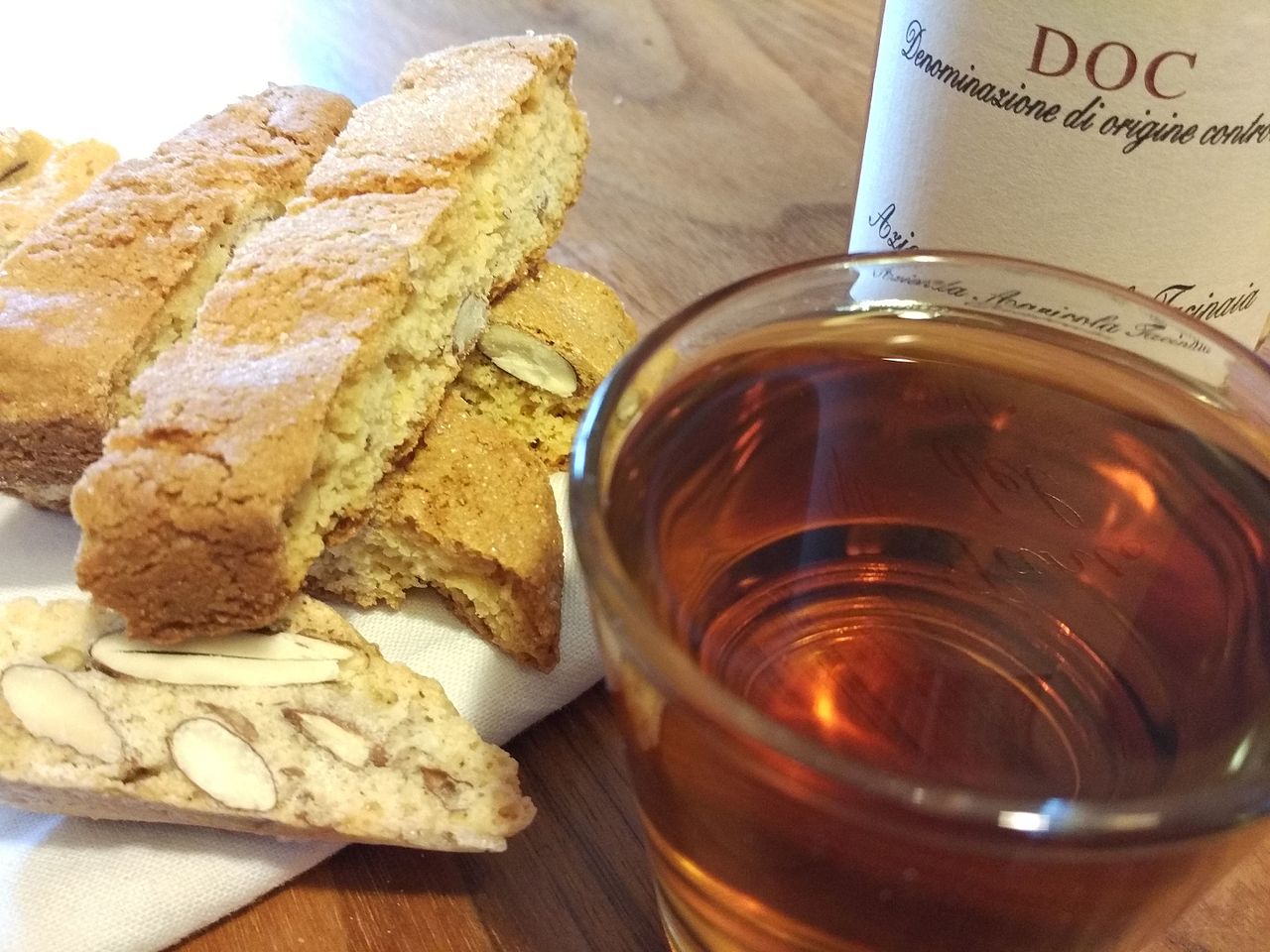
Image Source: Wikimedia Commons
The intense sweetness and notes of honey, dried fruit, and nuts in Vin Santo pair beautifully with local desserts like ricciarelli (almond cookies) and panforte (a dense fruit and nut cake).
For a truly special experience, try it with aged cheeses drizzled with local chestnut honey. The contrasting flavors create an unforgettable end to any meal in wine country.
Beyond Montepulciano
While Montepulciano’s wines are exceptional, venturing beyond its medieval walls reveals Tuscany’s rich tapestry of vineyards and flavors. The surrounding wine regions offer remarkable tasting experiences that complement the noble wines of Montepulciano.
Exploring Tuscany’s Wine Regions
Tuscany’s wine landscape extends far beyond a single town. Just a short drive from Montepulciano, I discovered the picturesque Orcia Valley, a UNESCO World Heritage site with stunning landscapes and emerging wines.
The Orcia DOC wines surprised me with their character. Though younger than their famous neighbors, these wines showcase the region’s potential with primarily Sangiovese-based blends.
For those looking to expand their tasting journey, consider exploring Rosso di Montepulciano DOC wines. These are essentially “baby Nobles” – younger, fresher versions that don’t require the same aging as Vino Nobile but still capture the essence of the region.
The Neighboring Gems: Montalcino and Chianti
Montalcino, just 30 minutes west of Montepulciano, produces the legendary Brunello di Montalcino. These powerful, age-worthy wines rank among Italy’s most prestigious offerings.
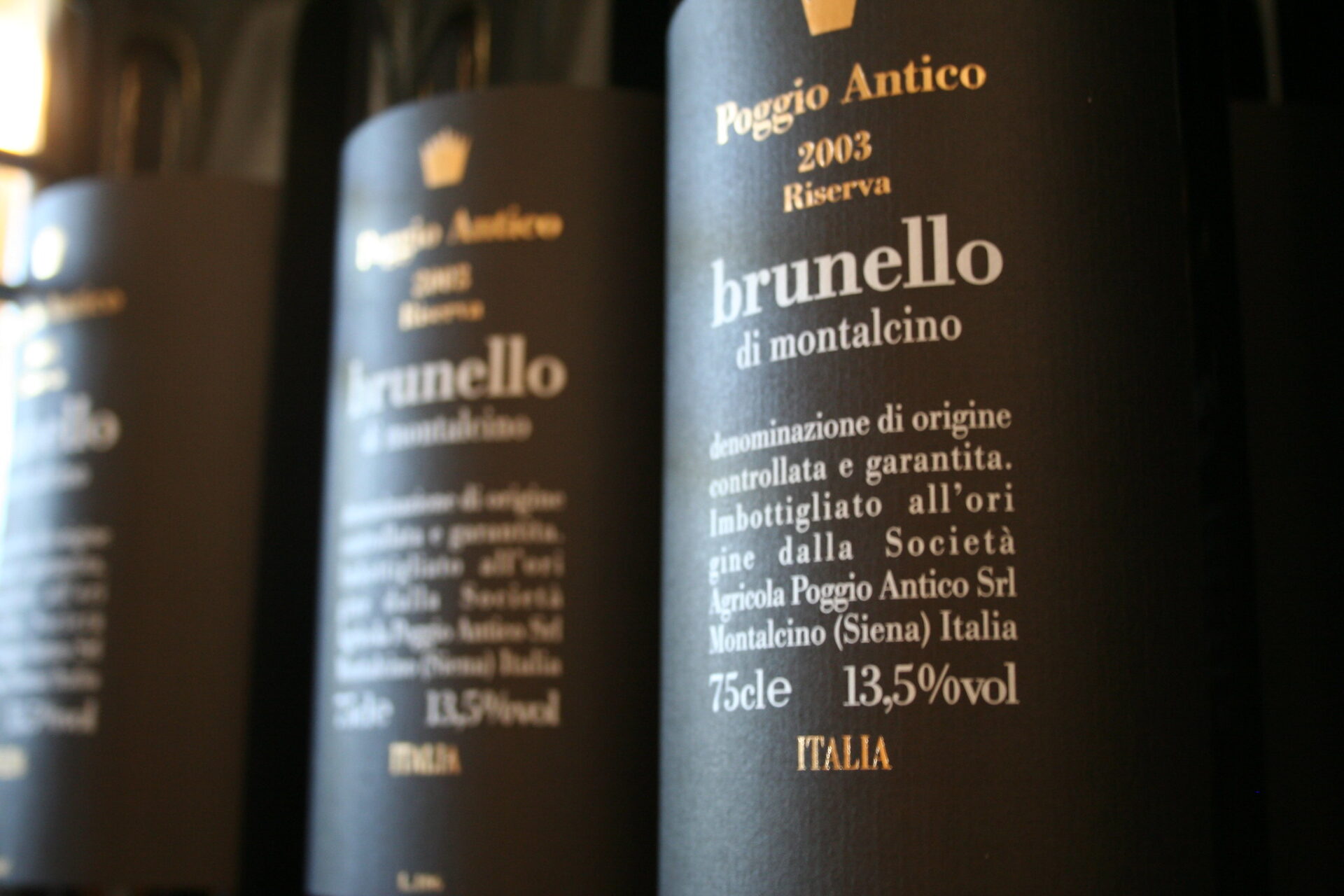
Image Source: Flickr
When I visited Montalcino’s hillside wineries, I was struck by the contrast in style. The Brunello wines typically show more concentration and power than Vino Nobile, despite using the same Sangiovese grape.
The iconic Chianti region lies north of Montepulciano and offers a different expression of Sangiovese. Here you’ll find elegant, food-friendly wines with bright acidity and distinctive cherry notes.
I recommend planning a day trip to include tastings in both regions. Many wineries offer tours by appointment. You can compare the subtle differences in terroir that make each region unique.

